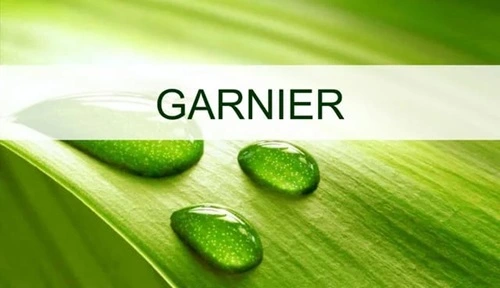Garnier, a leading brand under the L’Oréal Group, is a well-recognized player in the global beauty and personal care market. Founded in 1904, Garnier has built a strong reputation for providing affordable yet high-quality skincare, haircare, and beauty products. With its global presence in over 60 countries, the brand is widely known for its inclusive product range, catering to various skin and hair types. As Garnier moves into 2024, the brand faces both opportunities for growth and challenges, especially in an increasingly competitive and health-conscious market.

Garnier Current Overview:
Garnier continues to thrive as one of the top brands within the L’Oréal Group. The brand has diversified its offerings across skincare, haircare, and hair color products, becoming a go-to choice for millions of consumers worldwide. Garnier’s ability to adapt to market trends and launch innovative products has contributed to its ongoing success. Recently, the company has also focused heavily on sustainability, launching campaigns centered around eco-friendly packaging and products formulated with natural ingredients. Despite its success, Garnier faces growing competition from natural and organic beauty brands and must navigate challenges related to consumer preferences for healthier products.
Strengths:
1. Global Reach and Strong Brand Recognition: Garnier’s presence in both developed and emerging markets has given it a competitive advantage, allowing it to cater to diverse consumer needs globally. The brand’s affordability paired with quality has contributed to its strong consumer loyalty.
2. Diverse Product Portfolio: Garnier offers a wide range of products for different skin types, hair textures, and beauty needs. This extensive product lineup includes popular ranges like Garnier Fructis, Micellar Water, and SkinActive, which have consistently performed well in the market.
3. Strong R&D Capabilities: Garnier invests heavily in research and development, enabling it to introduce innovative products that meet consumer demands. Its emphasis on using natural ingredients and improving product efficacy aligns with consumer trends toward health and sustainability.
4. Effective Marketing and Digital Strategy: Garnier has successfully leveraged digital marketing and social media to engage with a younger, tech-savvy audience. Collaborations with influencers and celebrities, coupled with a strong online presence, have enhanced the brand’s visibility.
Weaknesses:
1. High Competition in the Mass Market: Despite its strong brand identity, Garnier operates in a highly competitive market with numerous players, including Nivea, Dove, and Pantene, all vying for consumer attention. This intense competition can limit Garnier’s market share.
2. Higher Pricing in Emerging Markets: Garnier’s products are often perceived as more expensive compared to local and herbal brands in emerging markets, which can deter price-sensitive consumers, particularly in regions like India.
3. Concerns About Product Ingredients: Garnier has faced scrutiny regarding the chemical composition of some of its products. With the increasing demand for organic and natural alternatives, Garnier may need to further reformulate or promote transparency about the ingredients used in its products
Opportunities:
1. Growing Demand for Natural and Sustainable Products: The beauty industry is seeing a rise in consumer preference for products with natural and organic ingredients. Garnier’s focus on sustainability and eco-friendly packaging can help the brand attract a new segment of eco-conscious consumers.
2. Expansion into Emerging Markets: With increasing disposable incomes in markets like India, China, and Southeast Asia, Garnier has the opportunity to expand its presence and introduce region-specific products. Tapping into these high-growth regions could significantly boost its global revenue.
3. Innovations in Digital Marketing and E-commerce: As e-commerce continues to grow, Garnier can strengthen its online presence and leverage data analytics for personalized marketing. Its partnerships with digital platforms and investment in mobile apps like Garnier Colour Match offer avenues to engage more directly with consumers.
4. Collaborations and Product Diversification: Collaborating with hotels, spas, or even beauty influencers could open new channels for sales. Additionally, expanding its men’s grooming line could diversify its product range and appeal to a broader audience.
Threats:
1. Intense Competition from Local and Global Brands: Garnier faces tough competition from both well-established brands like L’Oréal Paris and Nivea, and local herbal brands such as Himalaya and Biotique, which offer natural alternatives at competitive prices.
2. Changing Consumer Preferences: Rapid shifts in consumer behavior, particularly toward organic and chemical-free products, could negatively impact Garnier if it does not quickly adapt to these trends. Failing to stay ahead of such changes may result in losing customers to more health-conscious brands.
3. Economic Instability: Economic fluctuations, especially in emerging markets, could reduce consumer spending on non-essential items like beauty products, potentially impacting Garnier’s sales in price-sensitive regions.
Future Plans of Garnier:
Garnier’s future strategy revolves around deepening its commitment to sustainability. The brand aims to further reduce its environmental footprint by focusing on recyclable packaging, sourcing sustainable ingredients, and enhancing its supply chain transparency. Moreover, Garnier is likely to expand its digital marketing efforts, investing in personalized customer experiences via mobile apps and AI-driven recommendations. As consumer demand for health-conscious products grows, Garnier plans to introduce more natural and vegan product lines to cater to these evolving preferences.
Conclusion:
Garnier continues to be a key player in the global beauty and personal care market, with its strengths in product diversity, innovation, and marketing helping maintain its competitive edge. However, the brand must address challenges like rising competition and the growing demand for natural and sustainable products. By focusing on eco-friendly initiatives, expanding in emerging markets, and leveraging digital tools, Garnier can continue to thrive and meet the changing needs of consumers in 2024 and beyond.